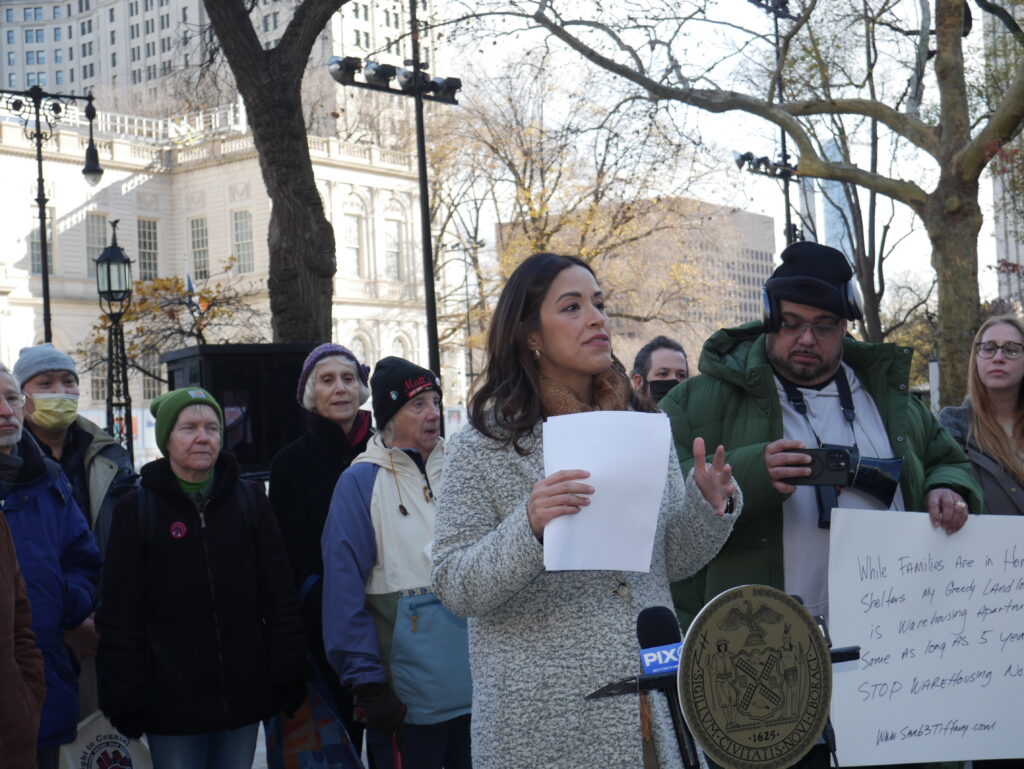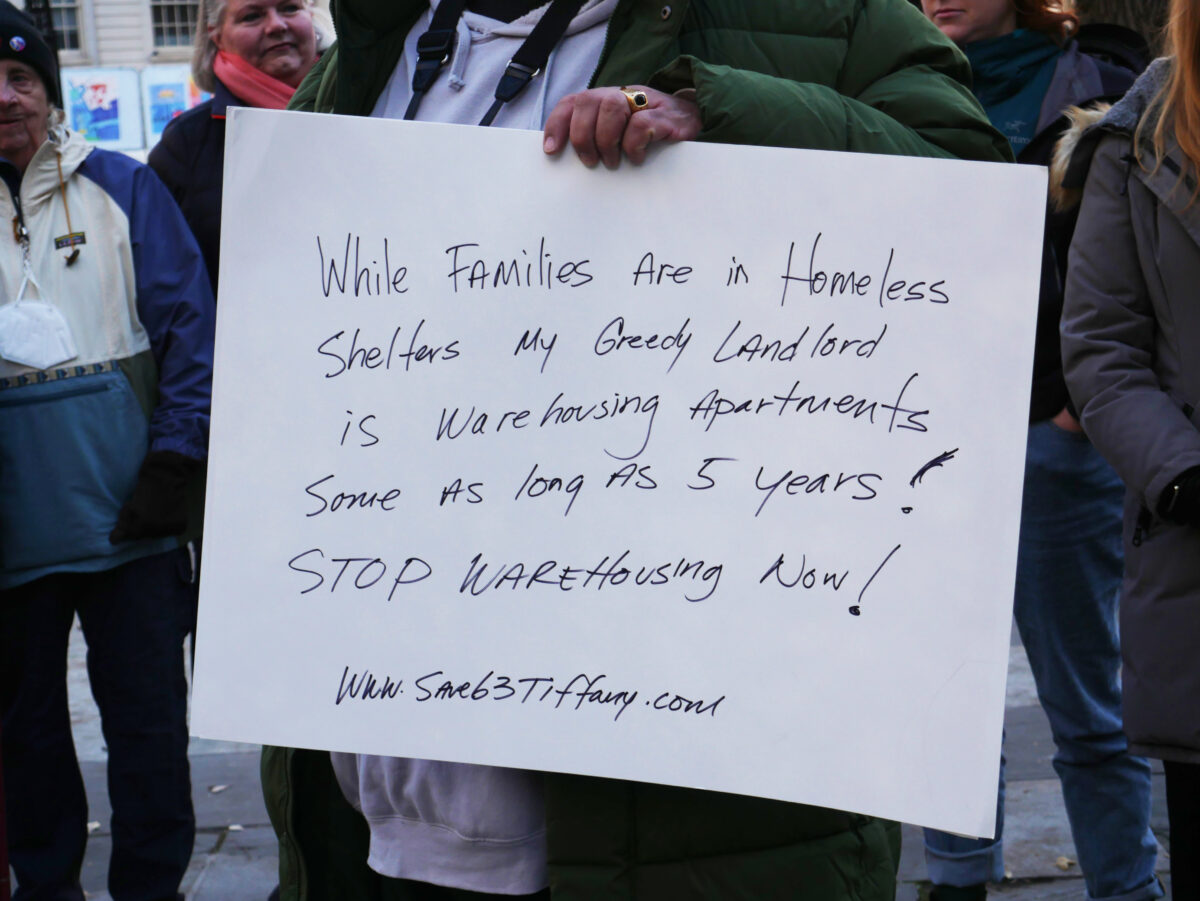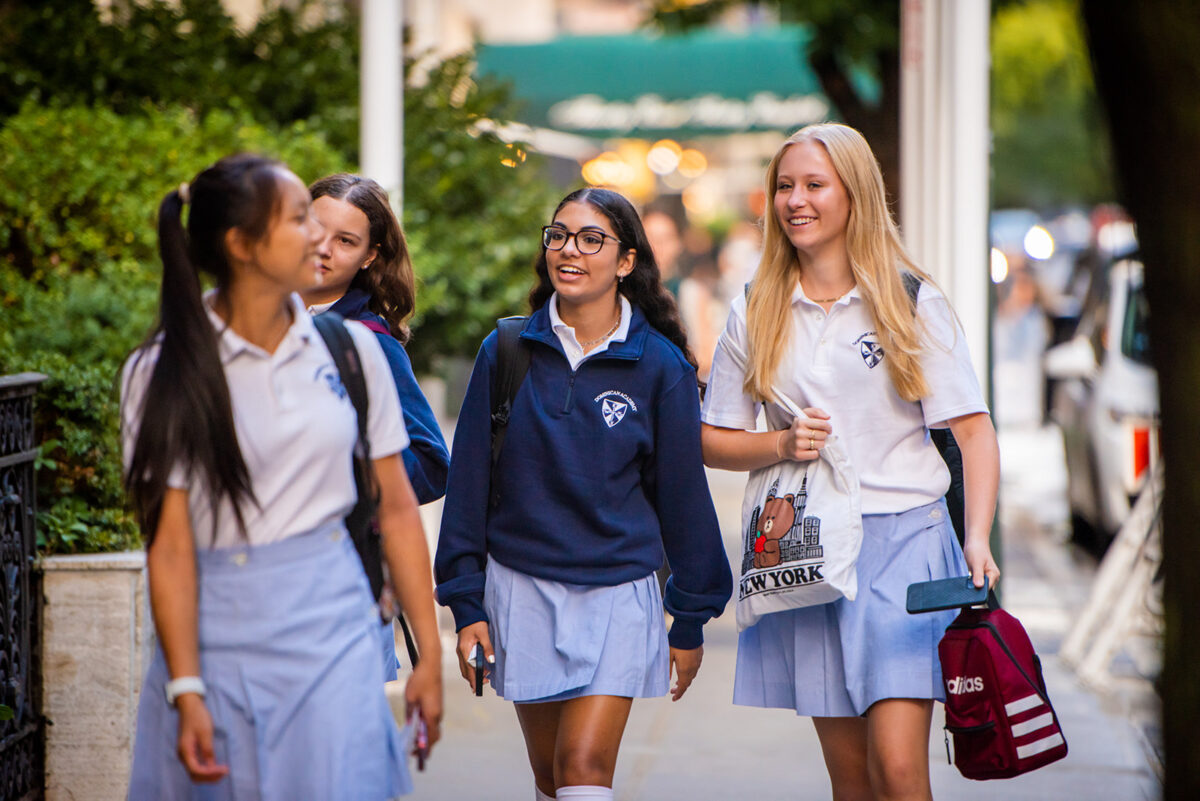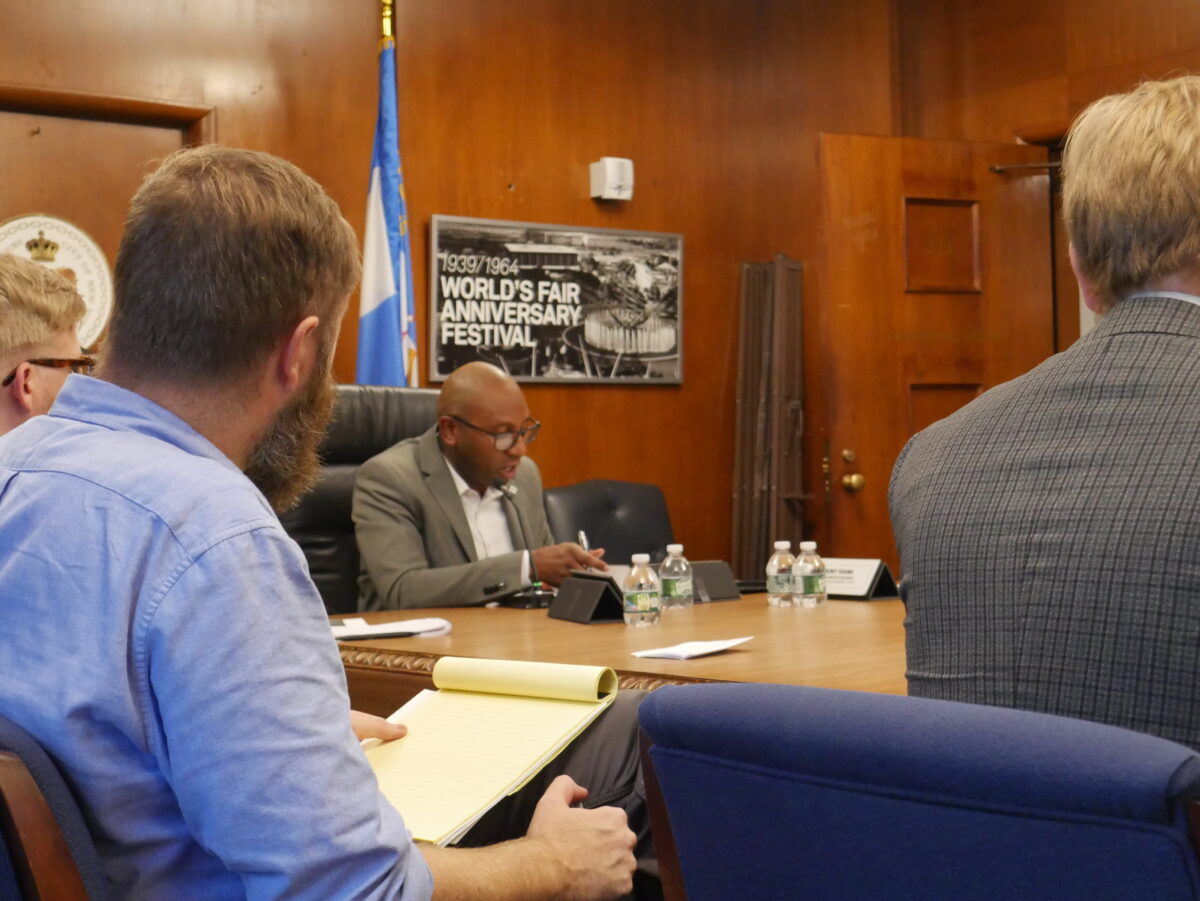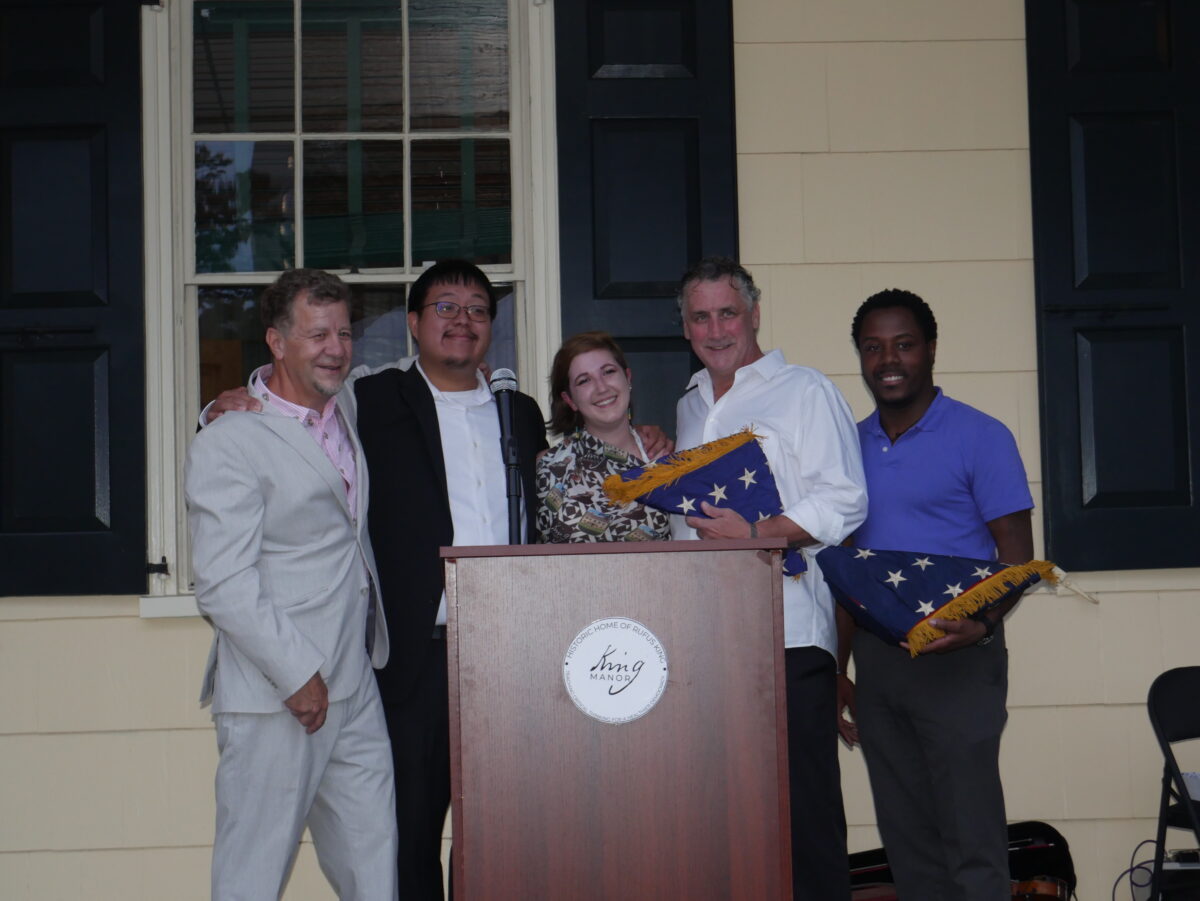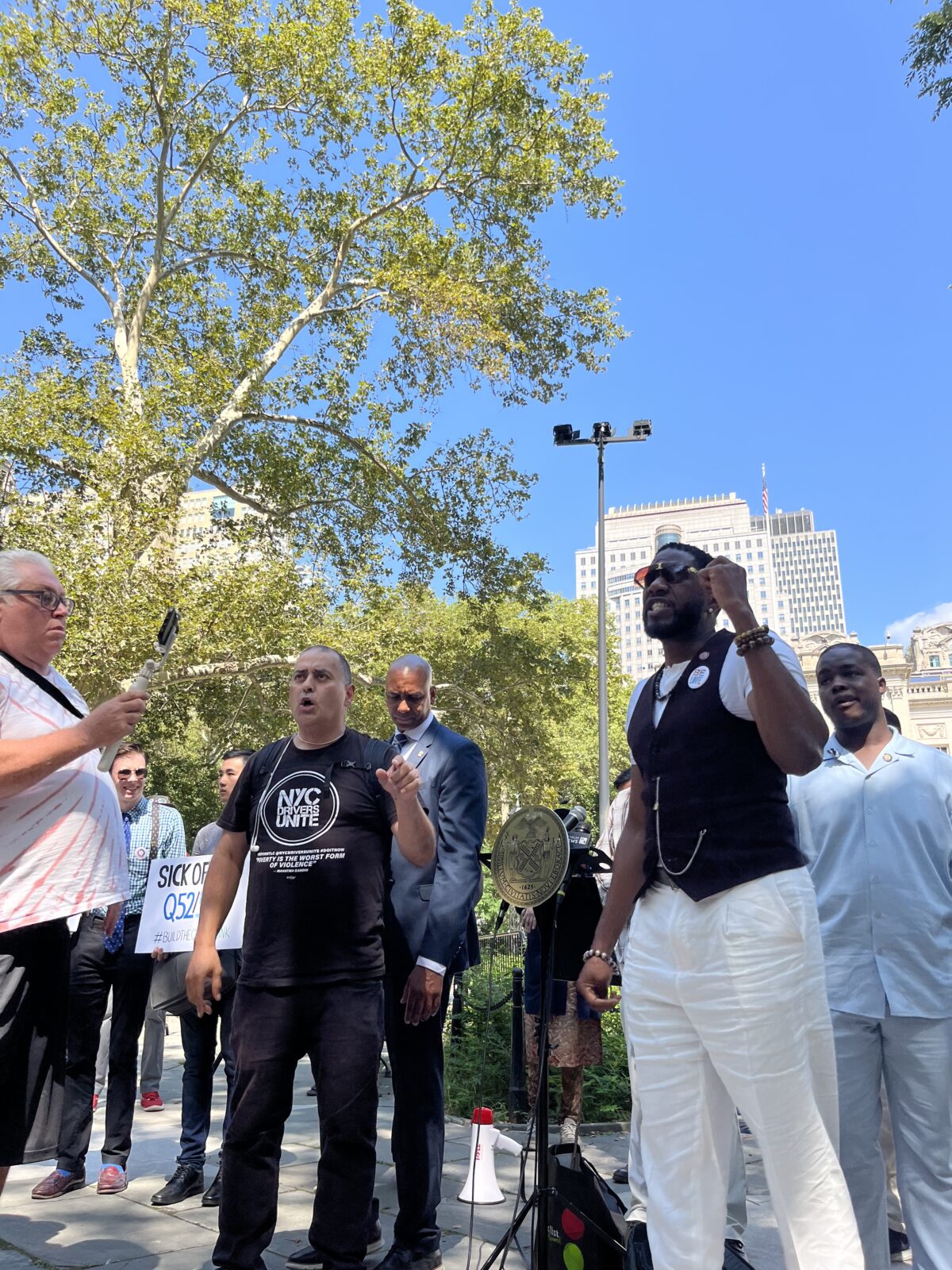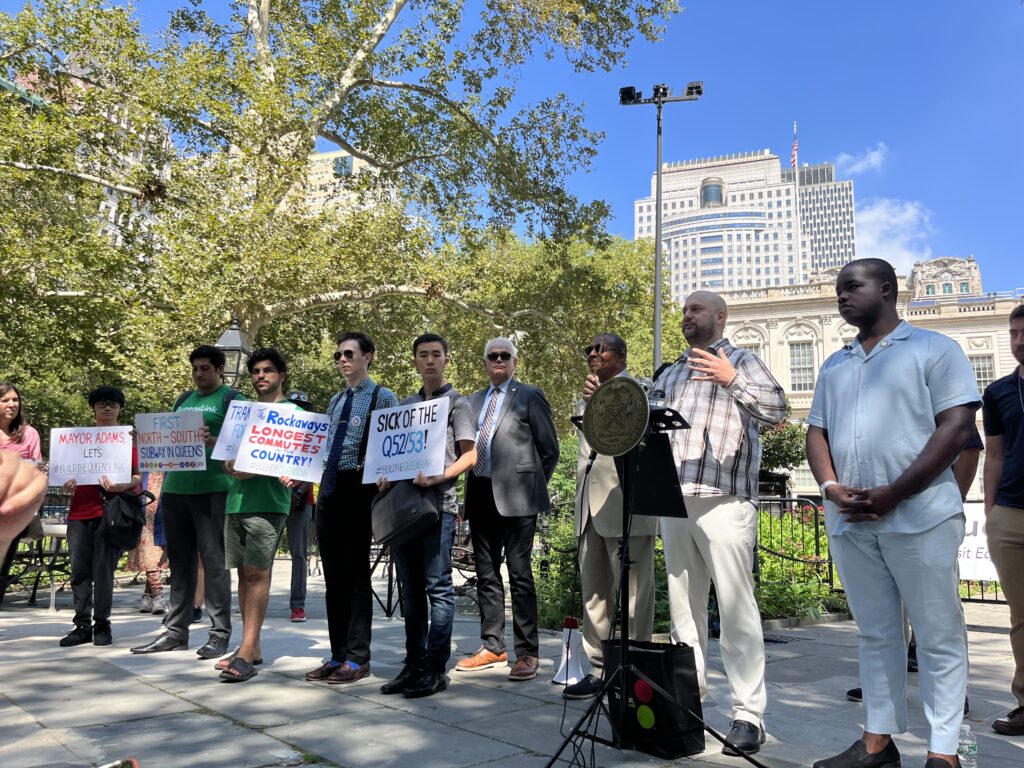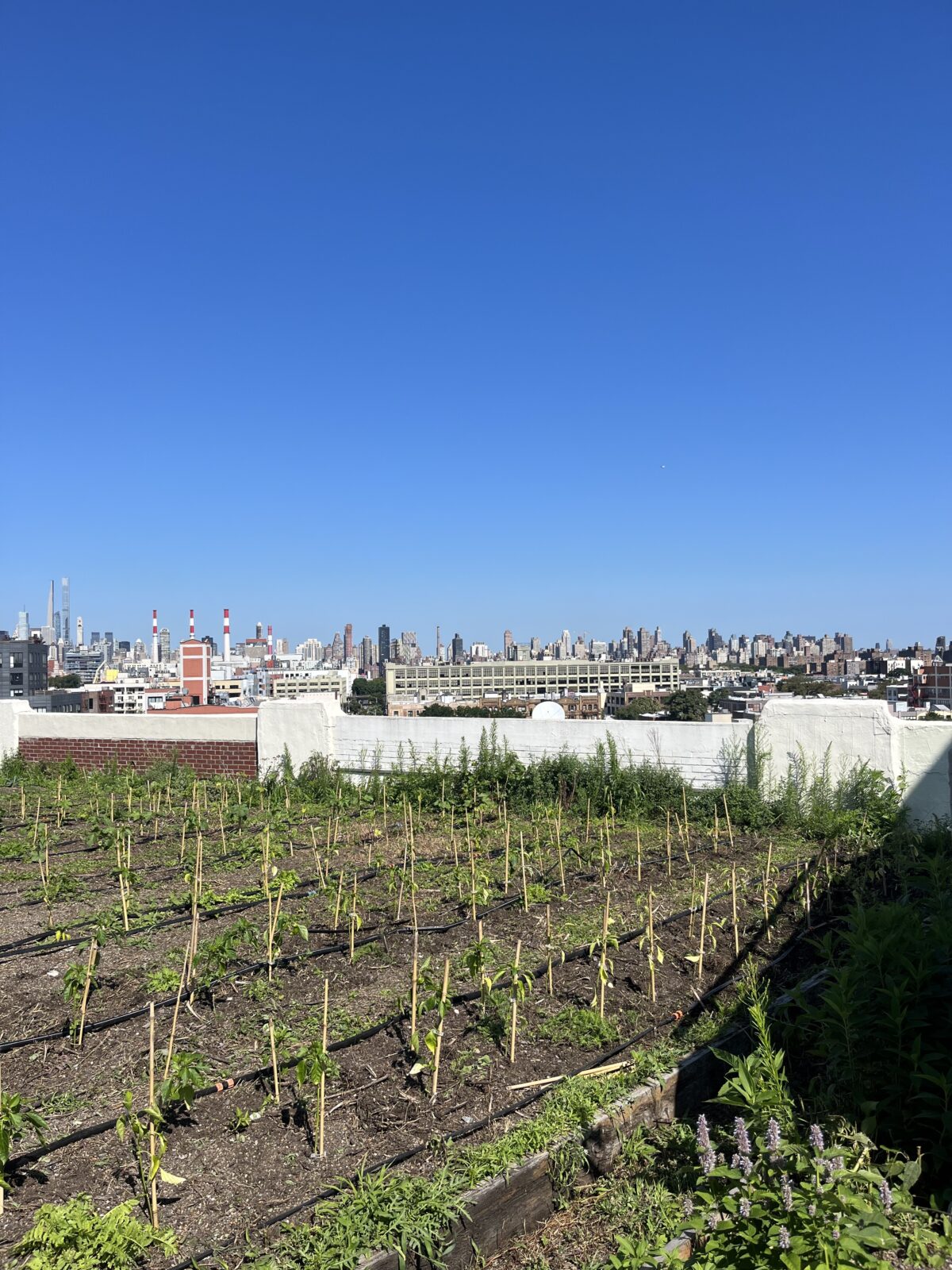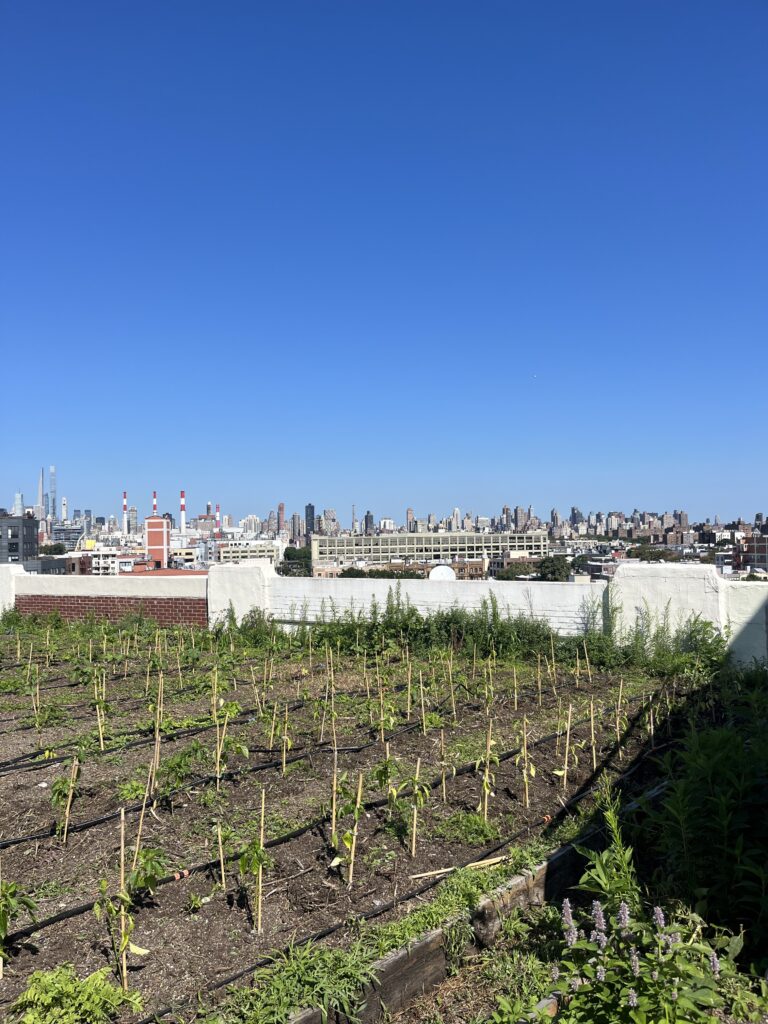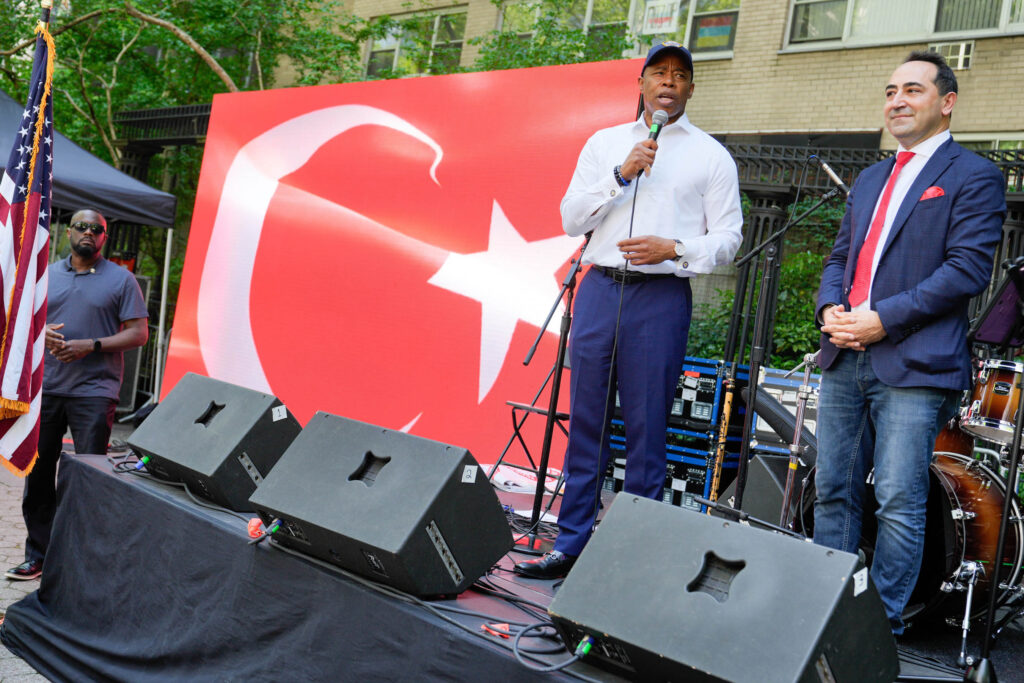
Credit Ed Reed/Mayoral Photography Office
By Matthew Fischetti, Oona Milliken, Charlie Finnerty and Celia Bernhardt | news@queensledger.com
The Crown-Heights home of Brianna Suggs, a 25-year old fund-raiser for Mayor Eric Adams’ mayoral run, was raided on Thursday Nov. 2. Suggs, who was 23 when she took on the task of running the mayor’s fundraising campaign, has not been charged with any wrongdoing, but FBI agents removed three iPhones, two laptops, alongside other materials such as binders, papers and a manila folder labeled “Eric Adams,” according to reporting by the New York Times.
The sweep is part of a broader probe by the FBI squad into public corruption under Mayor Adams helm. The federal government is investigating whether or not Adams has worked with the north Brooklyn construction company KSK Construction to inject foreign funds from Turkey to his mayoral campaign using straw donors. Various contributors who listed the construction company as their employer gave nearly $14,000 to Adams during his campaign. Construction company employees told THE CITY that they did not donate to Eric Adams or refused to state whether they had ever donated.
Though Suggs was young and inexperienced when she took her position as the mayor’s fundraising manager in 2021, the campaign raised more than $18 million for the campaign under her helm. She has worked with the mayor since 2018 during his days as Brooklyn Borough President, where she started as an intern whilst she was still enrolled as a student at Brooklyn College, according to her Linkedin profile. After rising through the ranks at Brooklyn Borough Hall, The Times reported that Suggs was making $80,000 at the end of her time in the office in 2021.
Online news outlet The Messenger reported that NYPD officials were sent to conduct a “wellness check” prior to the FBI raid, which was noted as unusual behavior.
Though Adams is not directly implicated in the investigation, this is the second time this year that straw donor allegations have surfaced in conjunction with his 2021 mayoral run. Six people were charged on July 7, 2023 with allocating public funds to the mayoral campaign, according to reporting by the Associated Press. The Suggs raid gives new weight to charges of public corruption under Eric Adams watch due to the influence of foreign funds from Turkey.
The news has already stirred 2025 speculation. Evan Roth Smith, from political consulting firm Slingshot Strategies, tweeted that “2025 starts today” and the New York Times has reported that there is potential interest in Broooklyn State Senator Zellnor Myrie while Politico reported that Queens State Senator Jessica Ramos was calling potential supporters.
*Turkish influence*
The influence of money from the Turkish government and possibility of conspiracy with foreign agents adds a level of seriousness to the allegations. The warrant for the raid on Suggs’ residence included “records of travel to Turkey by any employee, officer or associate of the campaign; and documents related to interactions between the campaign and the government of Turkey.”
Adams has a long history with the country. Just days before the raid, he attended a Turkish flag raising ceremony in Manhattan where he boasted his frequent travels to the middle eastern country, saying, “I’m probably the only mayor in the history of this city that has not only visited Turkey once, but I think I’m on my sixth or seventh visit to Turkey.”
The earliest record of these trips was in August 2015, when Adams flew to Istanbul as Brooklyn borough president to visit a Syrian refugee camp and establish a sister-city relationship between Brooklyn and Istanbul’s Üsküdar district. According to Conflict of Interest Board disclosures, the trip was paid for by Istanbul’s Bahcesehir University, Turkish Airlines, the “Turkish Culture and Promotion Office in New York,” and several Turkish government offices, totaling at least $15,000. Adams was presented with an “honorary faculty” by Bahcesehir University and a scholarship was created in his name.
In December of that same year, Adams returned to the country for another $14,000 trip paid for by the World Tourism Organization and Association of Young Tourism Leaders, both of which have ties to the Boğaziçi University in Istanbul, according to THE CITY. During the December trip, Adams spent time in the coastal city of Antalya where he met with Semsettin Aydin, the owner of a Turkish construction company, Baysas Construction.
According to a report at the time from Turkish media outlet Kadınca Emlak, Adams told Aydin he wanted to connect Aydin’s company to Brooklyn’s construction industry, saying, “I would like to host you in my country at the first opportunity you get,” Adams was reported as saying.
During the December 2015 trip, Adams also met with Enver Yücel, the president of BAU Global, the organization that founded both Bahcesehir University and Bay Atlantic University, in Washington D.C. Adams’ 2021 campaign received $10,000 from Bay Atlantic University staff, including the university’s president, Sinem Vatanartiran. These donations were returned before the election and later scrutinized by the Campaign Finance Board, but the Adams’ campaign was unresponsive to that scrutiny, according to The City.
Adams returned again to Istanbul in 2017 where he was interviewed by Turkey’s Daily Sabah. In the interview, Adams said that was his fifth visit to the country and mentioned plans to purchase a home there. He also expressed a desire to establish a Turkish trade center in Brooklyn.
“We want the business community here in Turkey to see the business opportunities in Brooklyn and vice versa particularly in housing development,” Adams said in the interview. “Brooklyn, where the Turkish community has small businesses, is a place where you can expand businesses.”
Back in New York, Adams has enjoyed loyal support from the city’s Turkish-American communities, including several fundraising events hosted by Turkish-American business owners between 2018 and 2021, according to several reports from CNN and NYCITY News Service. According to NY Magazine, a 2017 Turkish rom-com movie shot in New York City, New York Masalı, features Adams seemingly playing himself as borough president who two Turkish-American men approach to ask for political favors. Adams says he cannot understand them but says, “Brooklyn loves Turkey.”
Turkey has attracted criticism for human rights abuses and widespread corruption in recent years under president Recep Tayyip Erdoğan who rose to power in 2014. In the time since Erdoğan’s ascension, the country has fallen in Transparency International’s corruption index, ranking 101 out of the 180 countries scored in 2022.
Meanwhile, crackdowns on free press, free speech and protests through rampant police violence have become the norm in Turkey under Erdoğan, according to the Human Rights Foundation of Turkey. The European Court of Human Rights found Turkey liable for political suppression due to its attempts to close one of the country’s major opposition parties and ban over 400 of its representatives from government. These concerns have been in the international spotlight as the European Union considers admitting Turkey as a member nation.
Adams praised Erdoğan’s wife, First Lady Emine Erdoğan of Turkey, at a United Nations climate event.
“We have two mothers. One gave birth to us and the other sustained (us), and what the first lady is doing is stating it clearly,” Adams said, according to Turkish news outlet Anadolu Agency. “I thank you for your vision, for your wisdom and understanding that we have an obligation to sustain the life of the mother.”
*Dubious Practices*
Adams has been known to test the boundaries of campaign finance regulations without ever crossing the line into formal wrongdoing.
A New York Times review in 2021 highlighted Adams’s use of his nonprofit, One Brooklyn Fund Inc, to functionally sidestep limitations on donations: the organization enjoyed an influx of millions of dollars from supporters, some of whom had business before the city and would have been limited to giving only $400 per election cycle the straightforward way. In addition to directing resources towards charitable causes, One Brooklyn used funds to distribute promotional material about Adams, host extravagant fundraising events and bestow awards on constituent businesses (some of whom later contributed to Adams’s mayoral run, according to Politico). During a 2015 visit to Turkey as borough president, Adams stated in a press release that the trip “underscore[d] the deep importance of our own Turkish community and their contributions to our One Brooklyn family.”
There have been a slew of cases throughout the mayor’s career where he accepted funds raised by constituents on the city’s doing-business list right around the time they were seeking a particular outcome from his office. One of many examples is the case of Slate Property Group, as covered in a 2021 New York Times analysis: during Adams’s 2021 mayoral run, David Schwartz, a real estate developer and cofounder of Slate, organized a fundraiser that yielded $20,000 for Adams, according to the New York Times article. Weeks before, Slate Property Group had filed a land use application to build a new 40-story building in downtown Brooklyn, which would require a zoning change. Adams gave his approval to the rezoning efforts months later, against the wishes of the local community board, without disclosing any financial ties to Schwartz. More recently, Adams was grazed by a case of corruption from within his administration. Eric Ulrich, a former senior advisor to the mayor and head of the buildings department, currently faces charges of bribery. Among the list of wrongdoings, Ulrich is accused of accepting a discounted apartment from a developer with business before the city, and accepting cash in exchange for favors such as a second shot at a health inspection for a restaurant, exclusive contracts and job offers to family.
In the beginning of his mayoralty, Adams’s decision to appoint Philip Banks to the position of Deputy Mayor of Public Safety despite being an unindicted co-conspirator in a wide-ranging NYPD corruption case was highly criticized.
Mayor Adams has denied knowledge of any wrongdoing and said he would comply with investigations when asked about it during a PIX 11 interview.
“Well, first of all, where there’s smoke there’s not always fire. Listen, I make sure that we have real compliance. I spent hundreds of thousands of dollars to make sure that it’s done correctly, and we are going to comply with any agency, that review, whatever we do,” he said.
“And if anyone did something that’s appropriate outside of our compliance procedures, the law enforcement agencies will determine that. This is new and evolving, and we’re going to comply 100 percent. I have not been contacted by any law enforcement agency, and no law enforcement agency has determined that anyone associated with our campaign did anything wrong.”
